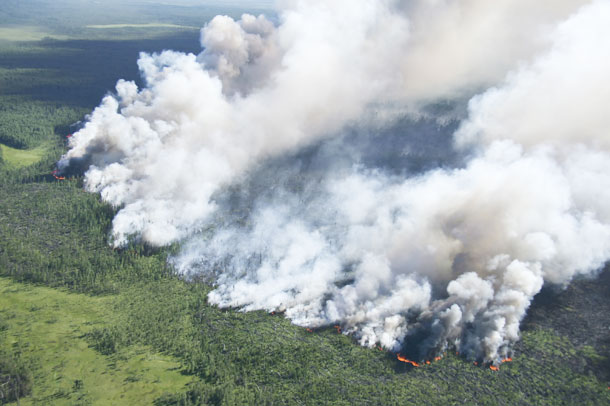A Study conducted by BirdLife Europe along with the European Environmental Bureau (EEB) and Transport & Environment (T&E) shows that CO2 emissions resulting from the burning of biomass have dramatically increase in the range of 90 to 150 million. The burning of such biomass, which have no climatic safeguards, are labelled as carbon neutral in Europe and thus do not require carbon permits under European Union’s Emission Trading System (ETS). This new study has been published on the 16th of March 2015.
Viewed differently, this massive release of CO2 emissions amount to 7% of all emissions in EU’s ETS or 3 times Portugal’s CO2 emissions in 2012.
Legislation passed in the European Union is based on the assumption that since CO2 emissions have been saved in the growth phase burning of biomass can be said to have zero emission. However, scientifically this is not always the case since emission reductions are not always within target which can push the carbon debt, the time delay in burning and recapturing the carbon, anywhere between 0 to 500 years.
Currently the European Union is struggling to formulate policies, covering biofuel, that address issues related to the Indirect-Land-Use-Change (ILUC) induced by land-based biomass. In all of the legislations passed by the European Union towards its renewable energy policies, the sustainability criteria is absent.
Furthermore there is very little actual information as to where this biomass originates from. The growing US wood-pellet industry supplies 98% of EU’s requirements despite the warning issued by the National Resource Defence Council stating that wetland logging, old-growth logging and large-scale clear cutting are unregulated in the US.
According to the Commission, consumption of Biomass is projected to increase by 40% by 2020, of which 15% will have to be imported, thus weakening Europe Union’s energy independence.
Transport and Energy’s energy policy analyst, says:
Viewed differently, this massive release of CO2 emissions amount to 7% of all emissions in EU’s ETS or 3 times Portugal’s CO2 emissions in 2012.
Legislation passed in the European Union is based on the assumption that since CO2 emissions have been saved in the growth phase burning of biomass can be said to have zero emission. However, scientifically this is not always the case since emission reductions are not always within target which can push the carbon debt, the time delay in burning and recapturing the carbon, anywhere between 0 to 500 years.
Currently the European Union is struggling to formulate policies, covering biofuel, that address issues related to the Indirect-Land-Use-Change (ILUC) induced by land-based biomass. In all of the legislations passed by the European Union towards its renewable energy policies, the sustainability criteria is absent.
Furthermore there is very little actual information as to where this biomass originates from. The growing US wood-pellet industry supplies 98% of EU’s requirements despite the warning issued by the National Resource Defence Council stating that wetland logging, old-growth logging and large-scale clear cutting are unregulated in the US.
According to the Commission, consumption of Biomass is projected to increase by 40% by 2020, of which 15% will have to be imported, thus weakening Europe Union’s energy independence.
Transport and Energy’s energy policy analyst, says:
“Giving biomass a zero-rating in the ETS is like signing a blank cheque – you never know what you are going to get. The absence of sustainability criteria and full carbon accounting for biomass frequently leads to more carbon emissions. In the case of American wood pellets exported to the EU, it is clear there is a problem in the US and Europe is responsible for it.”
This study also has a cost angle to it: as per this study, the EU is foregoing €630 Million to €1 Billion a year in revenue from its Energy Trading System, since the industry does not necessarily have to surrender allowances for the burning of biomass.
Revisiting the policy that allows zero-rating for the burning of biomass, will allow EU’s ETS to better reflect the net effect of the production and consumption of the biomass. Thus, only real emission saving will be allowed to be counted as zero in the ETS. Reassessing will also help rid the system of the incentives that allow for the increase greenhouse gas emissions and thus solve the problem of surplus allowances in the system.
This commission comprising of T&E, EEB and BirdLife has also called for sustainable safeguards for all usage of bioenergy and has announced that it will put in place a bioenergy sustainability policy as part of its renewable energy package for 2030.
In its Energy Union communication, the Commission announced that it would propose a bioenergy sustainability policy, as part of the renewable energy package for 2030.
References:
http://www.environmental-expert.com/news/up-to-7-of-carbon-emissions-in-the-ets-escape-through-loophole-474331?utm_source=twitter&utm_medium=social%20media&utm_campaign=stories






